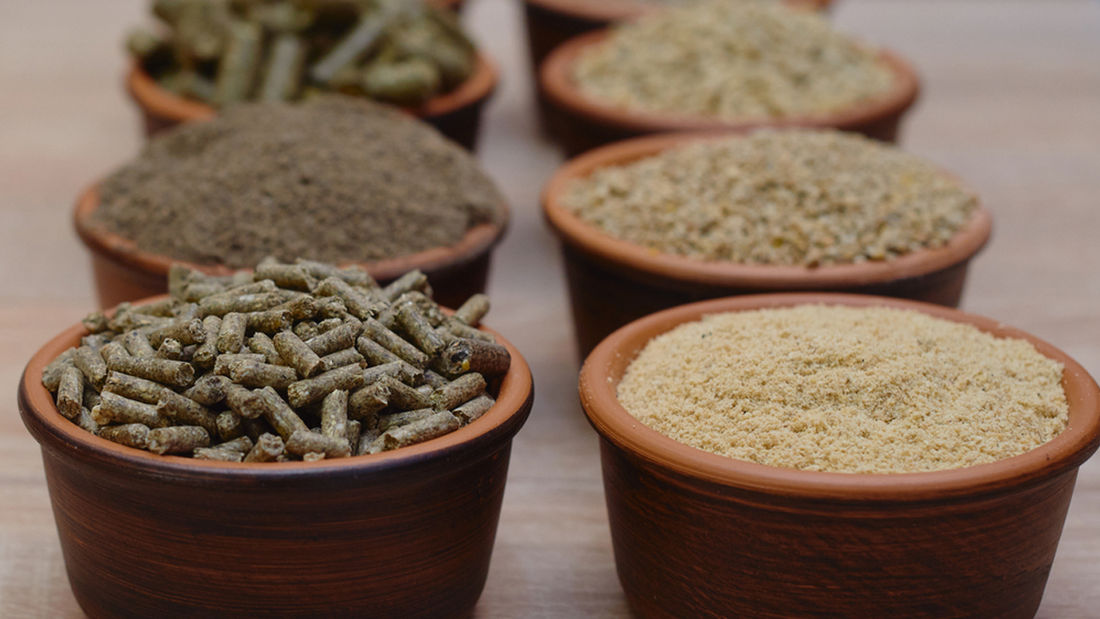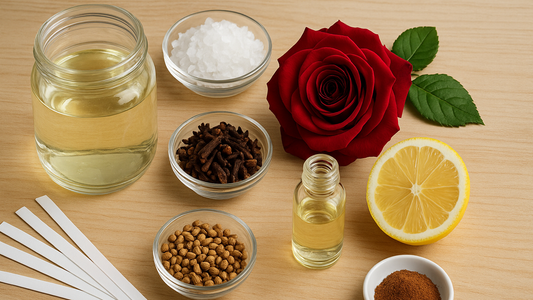Animals need sufficient consumption of food. Most animal feed available in the market plays a crucial role in fulfilling an animal's daily nutrient needs. But what do we do when the food is not palatable? It's simple - Add flavors! That is why flavoring agents are used in the feed to enhance its taste and increase acceptance, thereby promoting feed intake. These animal feed flavors prove particularly beneficial for those animals who consume less portion than the daily intake or animals experiencing stress, and high-yielding animals.
Using feed flavors has gained widespread acceptance, particularly among ruminants, due to two significant factors.
- Ruminants possess a considerable number of taste buds located on the upper surface of the tongue, as well as in the pharynx and larynx. Cattle, for instance, have approximately 25,000 taste buds, in contrast to the 9,000 found in humans and a mere 24 in chickens. This abundance of taste buds enables cattle to exhibit a more pronounced response to animal feed flavors, enhancing their overall taste perception.
- The extended retention of feed within the mouth of ruminant animals creates favorable conditions for the solubility of flavoring agents. This prolonged contact facilitates the release and distribution of flavoring agents, leading to an enhanced taste experience within the mouth. Consequently, this improved feed taste contributes to heightened feed intake and subsequently improves the performance of the animals.
Types, forms, and concentrations of the flavors:
Flavoring agents can be classified into two categories: natural flavors and artificial flavors. Both these components are commonly available in the form of dry powder, which is free-flowing and non-electrostatic. They are often concentrated and can be either pre-mixed with other trace ingredients and added to feed or applied through a specialized metering device designed for feed formulations.
In regular feed formulations, flavors are typically included in the diet at levels ranging from 0.5% to 1.5%. However, these levels can be adjusted based on various factors such as the animal species, the specific feed ingredients used, the duration of feed storage, water quality, and the occurrence of disease outbreaks.
We have mentioned a few important animal feed flavors below:
Carvacrol
Carvacrol possesses a distinct aroma reminiscent of oregano. Its notable antioxidant and antibacterial properties have made it a widely popular ingredient in animal feed and oral care products. Carvacrol serves to infuse a range of flavors with woody, spicy, and medicinal undertones, enhancing both savory and sweet profiles.
Most industries manufacture Carvacrol from natural d-limonene. Why? Because you can get a high-purity product with a minimum Carvacrol content of 99.5%.
Eugenol
This substance is an aromatic, colorless pale yellow oily liquid derived from specific essential oils, including clove, nutmeg, cinnamon, basil, and bay leaf. It possesses an allure for male orchid bees of various species, who collect it to synthesize pheromones. In research, it is frequently used as bait to attract and study these bees. It also acts as an attractant for female cucumber beetles. But its use is extended to the poultry sector.
In a recent study, the use of eugenol and garlic tincture was explored as an alternative to antimicrobials in broiler performance. The findings demonstrated that including a microencapsulated product comprising eugenol and garlic tincture in the diet can enhance the performance and intestinal health of broilers.
However, for chickens, the recommended daily dosage of eugenol is 100 mg/kg, as stated in the report by the European Food Safety Authority's Additives and Products or Substances Used in Animal Feed (FEEDAP).
Thymol
Thymol (THY) has been scientifically established as a potent antioxidant that can effectively enhance the quality of broiler meat during storage. It exhibits similar properties to the widely employed antioxidant butylated hydroxytoluene (BHT). Carvacrol and thymol can be used as feed additives in poultry nutrition to enhance growth performance and various biological aspects. These include antimicrobial, anti-inflammatory, antioxidant, and immunomodulatory effects.
If you are looking for a flavoring agent across any industry, contact SBBLG today! They are one of the leading large scale manufacturers and suppliers of fragrance and flavor compounds across Asia, Europe and North America.





